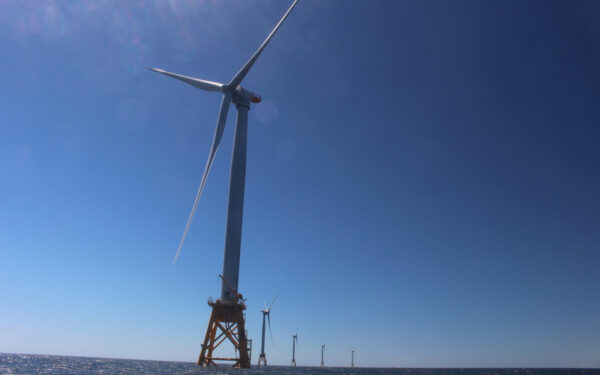The massive cooling towers at Brayton Point are now a pile of rubble. Brayton Point was once the largest coal plant in New England. Now, it will be transformed into a hub for the development of clean energy. Video: Commercial Development Company, Inc.
A few minutes ago, I witnessed history when Brayton Point Station’s massive cooling towers were reduced to heaps of rubble. These towers loomed over Mount Hope Bay and the town of Somerset for years. Their implosion marks the end of coal in Massachusetts and signals our region’s commitment to a clean energy future.
ICYMI: Bye bye Brayton Point video @CLF @ClimateActionRI @ClimateDisobey @dechristopher @NicolenaDiPaolo @agkithes @JulianDrix pic.twitter.com/3SwZbTqaNO
— Amy Moses (@CLFMoses) April 27, 2019
Sky 10 was in the air for the #BraytonImplosion pic.twitter.com/sqFwASLhZy
— NBC 10 WJAR (@NBC10) April 27, 2019
For years, CLF has challenged Massachusetts’s “Filthy Five” polluting coal plants for violating environmental laws and harming public health. We’ve shown that these aging outdated plants make people sick, aren’t economic, and stand in the way of clean, renewable energy.
Today’s demolition shows that our work is paying off. And, in a powerful symbol of the New England we are working to create, a hub for developing clean energy will emerge from the plant’s rubble.
But even as we celebrate history today, we can’t rest on our laurels. Three dirty coal plants remain in New England – plants that pollute our air and water, endanger our climate, and drag down our economy. And even though we have dramatically reduced our reliance on coal for energy, our region is has become overly dependent on the fracked gas industry, which wants us to believe it’s a climate-friendly fuel and not just dirty coal’s sharp-dressed cousin.
We are so close to ending the era of Big Coal in New England but there is still much more work to do to achieve the clean energy future we all deserve.
The Damaging History of Brayton Point
Construction of Brayton Point Power Station began in 1957, and by 1963 it was one of the largest power stations in New England. In its prime, Brayton Point is estimated to have burned 40,000 tons of coal every three days. And despite years of polluting Mount Hope Bay and harming the health of the people of Somerset, it operated until May 31, 2017.
While it provided power for 1.5 million homes, Brayton Point’s legacy is one of serious public health and environmental problems. According to a study by Harvard University School of Public Health, Brayton Point was responsible for:
- 28,900 asthma attacks per year
- 199,000 daily incidents of upper respiratory symptoms
- 1,140 emergency room visits per year
- 106 premature deaths per year
Additionally, Brayton Point polluted local waters with oil, grease, copper, iron, coal-pile runoff, chlorine, and some 20 other chemicals, as well as heated water, all killing millions of fish and shellfish.
Throughout the years, CLF fought alongside the local community to mitigate this pollution, demanding the plant decrease emissions of mercury, sulfur oxide, and nitrogen oxide. Together we forced the plant to build the massive cooling towers that came down today to stop the heated water from being dumped into the bay.
But the fact remains that the dirty fuels burned at Brayton Point have caused extensive – and quite possibly irreversible – damage to the environment and surrounding communities.
Turning a Dirty Coal Plant Into a Clean Energy Center
Brayton Point, which had rightfully earned its spot among the “Dirty Dozen” polluters in the region, was the last coal plant in Massachusetts.
And while there are still a few coal plants in New England to contend with, the undeniable end of the region’s largest plant is a turning point. Once the rubble is cleared, the site will become a staging ground for clean energy in New England. The new Brayton Point Commerce Center will be built to service the burgeoning offshore wind industry and other local companies. It’s a sign that the region is no longer willing to prop up unaffordable, dirty energy plants and instead plans to embrace a clean, renewable future.
It’s not a moment too soon. The latest scientific reports show that we must slash our climate-damaging emissions to zero by 2050 to avoid the most catastrophic effects of climate change. Getting off coal is a great first step, but we cannot allow our past dependence on coal and oil to become a full-throated addiction to fracked gas tomorrow.
It’s time for us to end our reliance on climate-damaging dirty energy for good. That means embracing the cost savings, health benefits, and economic promise of local clean energy. Thank you for standing with us to achieve a coal-free New England – and for your commitment to helping us reach net zero emissions by 2050.




